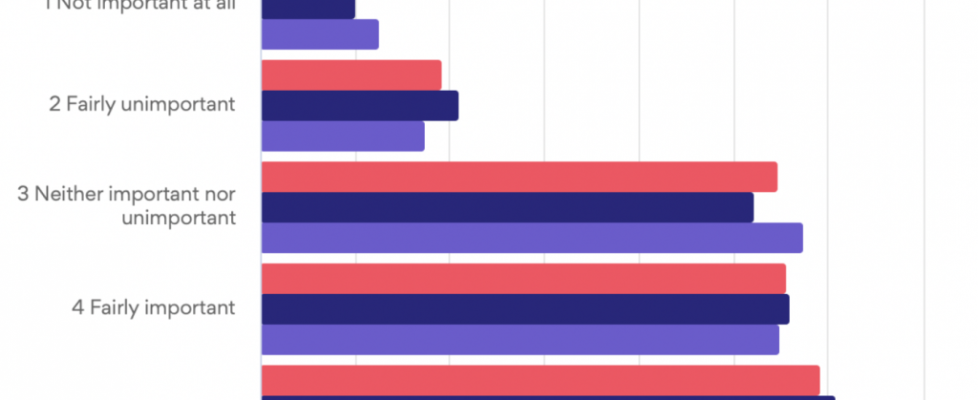PEOPLE
People is one of the four pillars of Fashion Business. It focuses on the health and wellbeing of society and how businesses can respond to cultural movement and diversity.
Gen Z consumers represent a broad group of consumers who share several values and consumer habits. This demographic has grown up in the digital age, surrounded with technology and the internet their entire lives. It is important for a brand to keep an eye on the behaviour and preferences of Gen Z consumers because their likes and dislike will continue to evolve as they continue to purchase products. For example, growing social platforms like TikTok have opened storefronts to make accessing products easy and convenient for viewers.
“61.6% of Gen Z say they are familiar with the concept of the metaverse” (Moran, 2022)
Getting to grips with the metaverse will be beneficial to brands because they will be able to tackle the struggles of lack in transparency and diversity. These issues can be correlated due to the growth in convenience and fast-track shopping and the growing conscience of unethical practices. To attract Gen Z consumers, brands will need to adopt more modern forms of marketing but also represent and align themselves with the same values as modern society, regardless of any drastic changes in logistics which may temporarily affect sales and revenue but in the long run will prove more socially sustainable.
“46.8% saying they have abandoned a purchase that did not align with their values.” (Moran, 2022)
The evolving fashion industry has continued to neglect diversity. A sustainable fashion future will need to consist of different people from varied backgrounds and complete transparency of that with consumers.
With the ongoing Black Lives Matter movement, companies have been put under a microscope to improve and provide an insight to brands policies and regulations. Following the death of George Floyd, Nike responded accordingly by turning their slogan on its head with – Don’t Do It. They had intentions of combatting racism which was a much-needed cultural awakening. Although this may not have been the most financially beneficial business decision, they were able to bring awareness to the unfair treatment of black people.
For a fashion brand to be successful they will need to recognise the preferences and priorities of the consumer group they are targeting. The internal business culture should reflect the façade they present to the public in terms of a diverse workforce since this will give them improved access to talent, enhanced decision making and strengthened employee engagement.
“Companies with the most ethically and culturally varied executive teams are 33% more likely to outperform homogeneous competitors with regard to profitability” (Magnusdottir, 2020)
Magnusdottir, A. (2020) The Time Is Now For Diversity In Fashion https://www.forbes.com/sites/aslaugmagnusdottir/2020/11/17/the-time-is-now-for-diversity-in-fashion/?sh=282bdff06dc2 (13/10/2022)
Moran, G. (2022) Drapers, Gen Z and Millennials 2022: Introduction: The 2022 view https://www.drapersonline.com/guides/gen-z-and-millennials-2022 (13/10/2022)
Moran, G. (2022) Drapers, Gen Z and Millennials 2022: Sustainability and Values https://www.drapersonline.com/guides/gen-z-and-millennials-2022 (13/10/2022)
